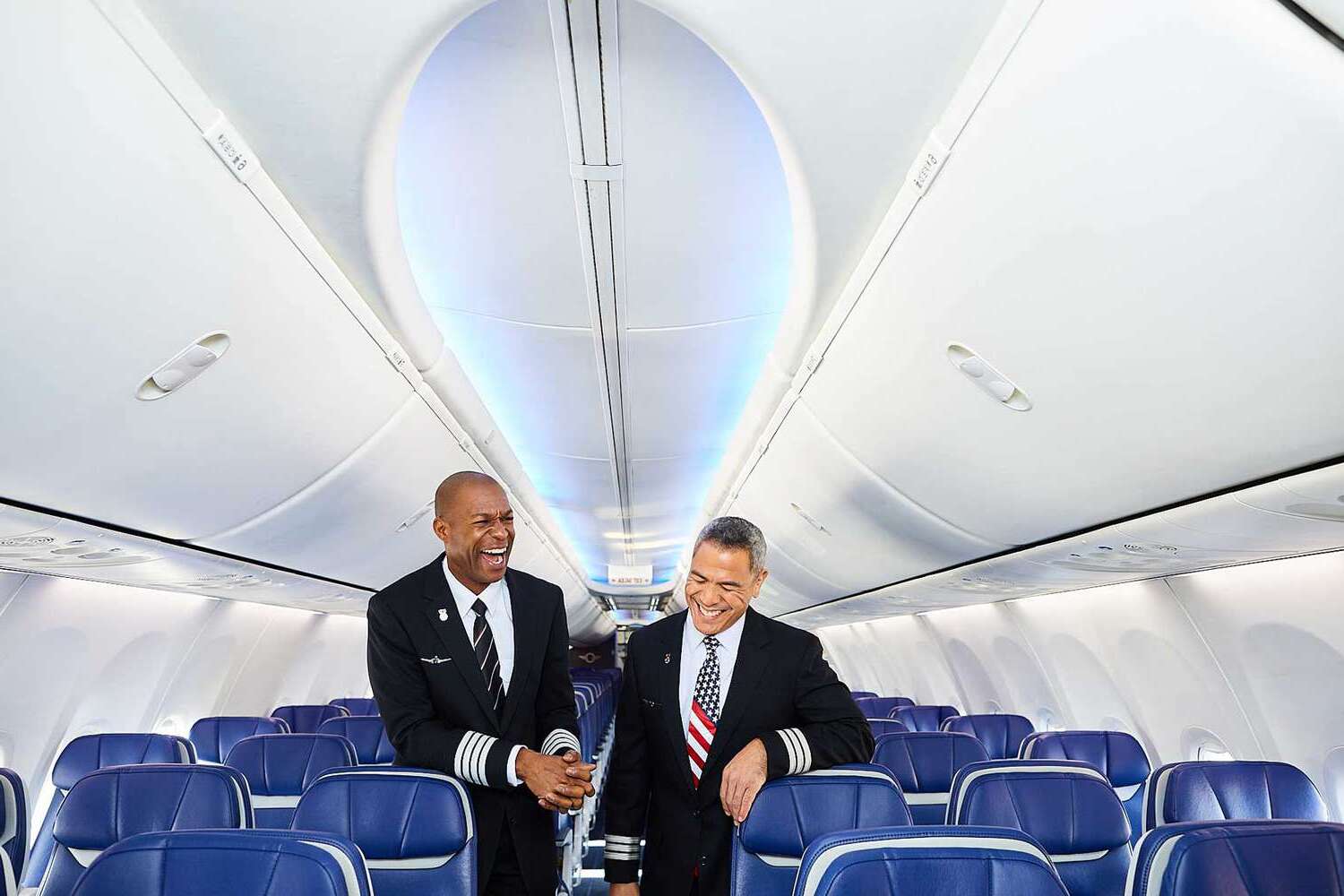
Ever wondered what makes airline customer service tick? From the moment you book a ticket to the time you collect your luggage, a lot happens behind the scenes. Airlines strive to ensure passengers have a smooth journey, but what really goes into making that happen? Customer service in airlines involves more than just friendly smiles and helpful staff. It includes handling complaints, managing delays, and even accommodating special needs. Did you know that some airlines offer compensation for flight delays? Or that they have special teams dedicated to lost luggage? Understanding these facts can help you navigate your next flight with ease. Ready to learn more? Buckle up!
Key Takeaways:
- Airline customer service has come a long way, from nurses as flight attendants to in-flight Wi-Fi and lie-flat seats. Airlines prioritize safety, comfort, and diversity to enhance the passenger experience.
- Airlines invest in extensive training, technology, and environmental sustainability to ensure top-notch customer service. From language skills to carbon offsetting, they strive to provide a smooth and responsible travel experience.
The Evolution of Airline Customer Service
Airline customer service has transformed significantly over the years. From the early days of commercial aviation to the modern era, airlines have continuously adapted to meet passenger needs.
-
Early Days: In the 1920s, flight attendants were registered nurses. Airlines believed medical training was essential for passenger safety.
-
First Female Flight Attendant: Ellen Church became the first female flight attendant in 1930. She was also a registered nurse.
-
Meals on Board: The first in-flight meal was served in 1919 on a Handley-Page flight from London to Paris. It consisted of sandwiches and fruit.
-
Customer Loyalty Programs: American Airlines introduced the first frequent flyer program in 1981. It rewarded loyal customers with miles that could be redeemed for free flights.
Modern Amenities and Innovations
Today's airlines offer a range of amenities to enhance the passenger experience. These innovations aim to make air travel more comfortable and enjoyable.
-
In-Flight Entertainment: The first in-flight movie was shown in 1921 on a Aeromarine Airways flight. Today, passengers can enjoy movies, TV shows, and games on personal screens.
-
Wi-Fi on Planes: In 2008, American Airlines became the first U.S. airline to offer in-flight Wi-Fi. Now, many airlines provide internet access on most flights.
-
Lie-Flat Seats: Introduced in the 1990s, lie-flat seats in business and first class offer passengers the comfort of a bed during long-haul flights.
-
Premium Economy: This class, introduced by EVA Air in 1991, offers more legroom and better service than economy class without the high cost of business class.
Customer Service Training and Standards
Airlines invest heavily in training their staff to ensure high standards of customer service. This training covers various aspects, from safety to hospitality.
-
Extensive Training: Flight attendants undergo rigorous training, often lasting several weeks. This includes emergency procedures, customer service, and first aid.
-
Language Skills: Many airlines require flight attendants to be fluent in multiple languages to better serve international passengers.
-
Cultural Sensitivity: Airlines train staff to be culturally sensitive, understanding and respecting the diverse backgrounds of their passengers.
-
Conflict Resolution: Training includes handling difficult situations and resolving conflicts to ensure a smooth flight experience for all passengers.
Technology and Customer Interaction
Technology plays a crucial role in modern airline customer service. From booking to boarding, tech innovations streamline the travel process.
-
Online Booking: The first online booking system was introduced by American Airlines in 1995. It revolutionized how passengers book flights.
-
Mobile Apps: Most airlines now offer mobile apps that allow passengers to book flights, check in, and receive real-time updates.
-
Self-Service Kiosks: Introduced in the early 2000s, these kiosks allow passengers to check in, select seats, and print boarding passes without waiting in line.
-
Chatbots: Many airlines use AI-powered chatbots to assist customers with common queries, providing quick and efficient service.
Environmental and Social Responsibility
Airlines are increasingly focusing on environmental sustainability and social responsibility. These efforts aim to reduce their carbon footprint and contribute positively to society.
-
Carbon Offsetting: Some airlines offer passengers the option to offset their carbon emissions by investing in environmental projects.
-
Sustainable Fuel: Airlines are investing in sustainable aviation fuel (SAF) to reduce their environmental impact. SAF can reduce carbon emissions by up to 80%.
-
Community Engagement: Many airlines engage in community service, supporting local initiatives and disaster relief efforts.
-
Diversity and Inclusion: Airlines are committed to promoting diversity and inclusion within their workforce, ensuring equal opportunities for all employees.
Final Thoughts on Airline Customer Service
Airline customer service can make or break your travel experience. From baggage handling to in-flight amenities, every detail counts. Friendly staff and efficient problem-solving can turn a stressful situation into a manageable one. Frequent flyer programs and loyalty rewards add value for regular travelers. Communication is key; clear updates on delays or changes help passengers stay informed. Technology plays a big role too, with apps and online check-ins making the process smoother. Feedback from passengers drives improvements, so don't hesitate to share your experiences. Training and employee satisfaction are crucial for maintaining high standards. Remember, a little patience and understanding go a long way. Next time you fly, notice how these elements come together to shape your journey. Happy travels!
Frequently Asked Questions
Was this page helpful?
Our commitment to delivering trustworthy and engaging content is at the heart of what we do. Each fact on our site is contributed by real users like you, bringing a wealth of diverse insights and information. To ensure the highest standards of accuracy and reliability, our dedicated editors meticulously review each submission. This process guarantees that the facts we share are not only fascinating but also credible. Trust in our commitment to quality and authenticity as you explore and learn with us.


